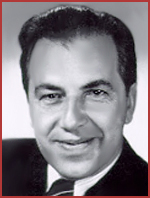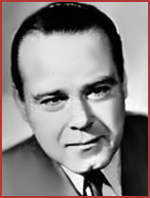
By JASON COMERFORD George Waggner’s The Wolf Man represented a crucial turning point in the history of the American horror film. Universal’s series of monster films, beginning in 1931 with the release of Tod Browning’s Dracula and James Whale’s Frankenstein, had been treated as the redheaded stepchildren of the studio’s output, despite their popularity with audiences. Waggner’s The Wolf Man was a step towards A-level respectability, with a cast of stars both established (Claude Rains, Bela Lugosi) and upcoming (Ralph Bellamy and, of course, Lon Chaney Jr. as the titular character), and an uncommonly high level of production expertise (previous efforts in the genre were often limited by thrifty budgets). |
Click [here] to listen to a sample
Installment Prize: A prize will be awarded at the What do you think? Click here to submit a comment Awesome Websites! The Wolf Man Bluray (Amazon) Gene Moore is an organist
|
|
| Dino | A cinematic wonder where we are introduced to a simple story and is told in a simplistic way. A struggle to survive a terrible situation ...and having to fight yourself as good and evil. Now comes in the score that gives you your ups and downs as a good score should, but this is just a different feel. A glorious reminder it does not need to be huge to grab your attention. |
|
| Jonathan | I like the Salter/Skinner duo. I will check out the re-recording. I just read some more comments on the soundtrack and it really looks like a winner. |
|
| S. Dawg | The Wolf Man belongs to Universal's Silver Age; we were mercifully spared sequels akin to those inflicted on The Mummy. Nevertheless there was no avoiding Abbott and Costello, who proved the creature's ultimate nemesis. | |
| Pooter | This was always my favourite Universal Horror movie, and the score is superb. There's something about those lush sweeping strings that you don't hear as much in horror these days. |
|


